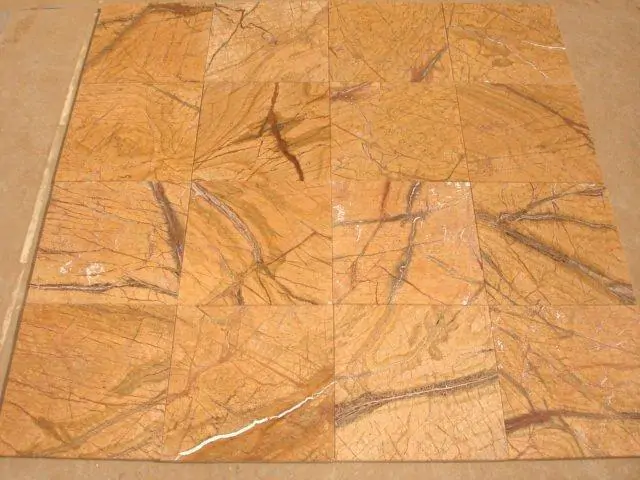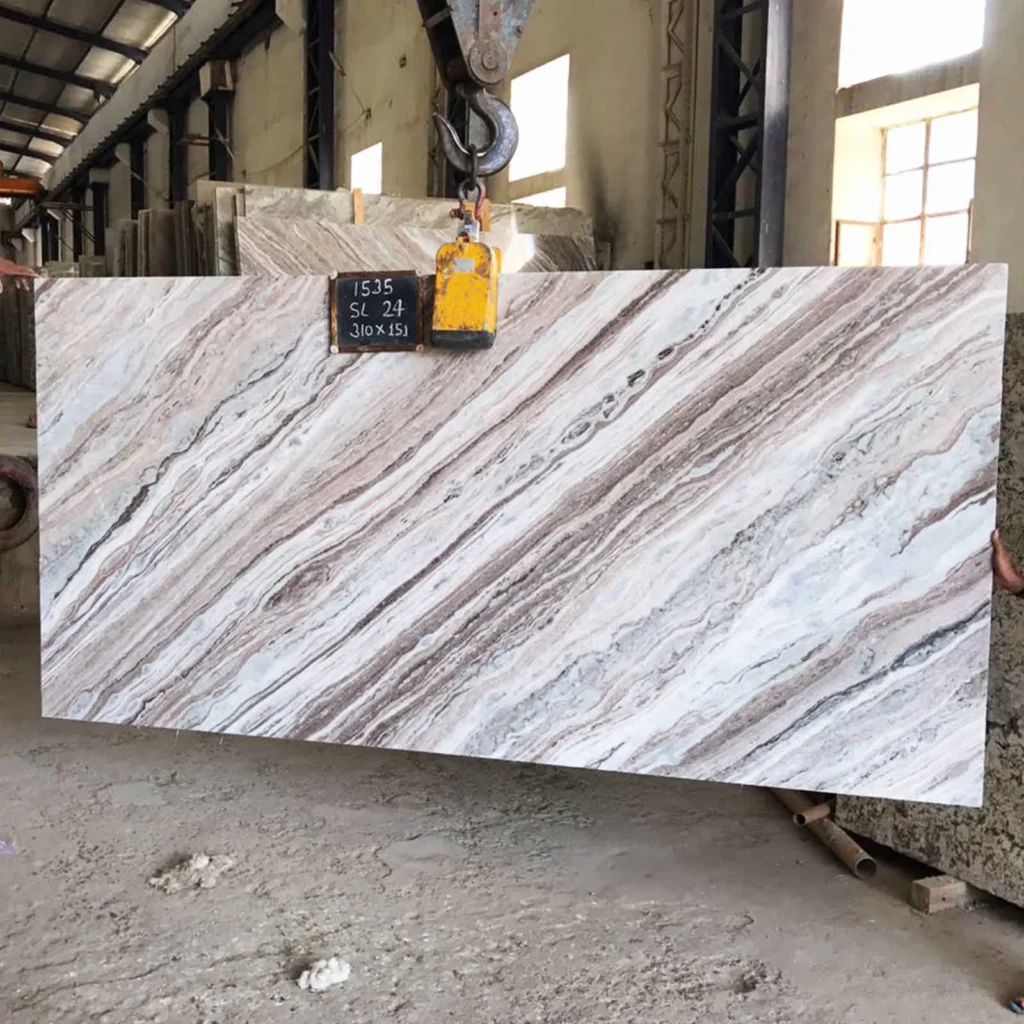The unspoiled sophistication of marble stone has made it one of the perceptive choices in the construction industry. Be it a commercial place or a residence, the use of marble at various places is prevalent. From marble flooring in the living room to marble countertop in a kitchen, this natural stone carries an inherent potency to lend an artistic and sophisticated visual appeal to any environment. If you think there is no such thing as artificial marble and all marbles are real, you can’t afford to miss this post.

What is Natural or Real Marble?
Marble is a metamorphic stone primarily made up of calcite. It is a kind of limestone that encounters transformation over the years when exposed to a high level of heat and pressure. While some marbles are untouched white, others might have a number of color veins due to the occurrence of the different minerals present in the limestone.

Being a natural stone, marble is found in abundance all across the world. Marble is found to be a hard stone and shows reaction when exposed to acidic elements. For example, it tends to change its colors on coming in contact with certain substances. Today, Indian marble is used across a range of applications. It’s utilized to construct fireplaces, countertops, kitchen hoods, walls, fountains, and a number of different other things.
What is Artificial or Cultured Marble?
In simple terms, artificial marble is a mix of marble dust, plastic cement, stone residue, and a few other elements. It is prepared by mixing the solution with acrylic glue in a certain percentage. However, artificial marble boasts a consistent look, comes in myriads of colors, and appear more refined due to their cultured color and polish.
At present, many B2B and B2b buyers prefer artificial marble over natural due to their low cost despite knowing the truth. Mostly, they are used for flooring, furniture, wall cladding, and furniture applications.
How can you differentiate between real and fake marble?
As the demand for Indian marble is quite high all over the world, both natural and artificial marbles are supplied. Things tend to get a bit murkier when a seller gives fake marble at the price of a natural one. This is when it come necessary for the buyers to ascertain the difference between these two.

So, here is how to tell the difference.
1. Abundance of color patterns
Natural marble boasts diverse colors given the presence of impurities in the limestone. Artificial marble, on the other hand, has flexible color and textures, which promotes selection assortment. The colors are added artificially and sometimes miss that natural feel, texture, grain, and gloss of natural marble.
2. Maintenance
Natural marble is a costly product and comes with a high maintenance cost. Marble is a hard but stiff stone and tends to become discolored or fragmented after a duration. Therefore, sometimes it is suggested to get it resealed twice a year. If you are using natural marble, it is necessary that you avoid spilling oil, acidic materials, or cleaners that are found to react with the marble as it can result in stone damage.
Cultured/ artificial marble, on the other side, is a non-porous constituent that needs lesser maintenance. Moreover, artificial marble is prepared in such a way that it exhibits superb resistance to oil, stains, chemicals, and discoloration. This is why they are safe for the use of usual surface cleaners.
3. Weight
This is certain as artificial marbles are found to be thinner as compared to natural ones. The overall look and feel of cultured marbles remain low-key while weightage reflects in natural marbles. However, in terms of installation and shipping, artificial marble is easy due to its low weight.
4. Homogeneity
Every piece of natural marble is unique, and it is very difficult to find a piece with a similar structure. But on the other hand, artificial marbles are standardized and one can easily find a number of similar illustrations for application. Also, artificial marbles exhibit double-sided consistency, so application largely depends upon the buyer’s penchant.
5. Heat Resistance
As natural marble is made out of geographic action, it poses great resistance to extreme heat, whereas, artificial marble may not bear high temperatures. It is made using glue and other elements and heat trends to make it melt on continuous exposure.
6. Cost
Natural marble undergoes several stages before coming out as usable material. This tends to increase the manufacturing cost of natural marble. In comparison to this, artificial marble involves lesser activities, thus costing less than its counterpart.
7. Installation
Installation of natural marble asks for a talented expert who knows how to handle a hard stone. If not done properly, marble tends to curl, crack, or discolor during the process. However, due to its low weight and less fragility, artificial marble is comparatively easier to install.
Pros and Cons of Natural Marble
| Pros | Cons |
| Made from limestone, a natural stone | Quite expensive |
| Possesses great visuals and gloss | Reactive to stains |
| Enhances property value | Prone to discoloration |
| Carries weight | Degrades over time |
| Durable and distinctive |
Pros and Cons of Artificial Marble
| Pros | Cons |
| Low cost as compared to natural marble | Difficult to remove scratches from the surface |
| Can be customized as per the buyer’s preference | Weaker than natural marble |
| High-quality artificial marble looks like a natural one | Can be made using inferior quality elements, thus leading to bad quality |
| Easy maintenance | Gel coating cracks on extended use |
| Very durable |
For ages, marble is one product that stands synonymous with an unmatched beauty. It is largely used in building several iconic structures worldwide due to its beauty. Despite requiring heavy maintenance, it is considered an upscale architectural investment.
However, in order to derive the best value of this investment, it is necessary to choose the right marble manufacturer and exporter who is known to provide high-quality natural stones including marble. A carefully chosen marble slab would not only enhance the visual appeal of your project but also its monetary value.
